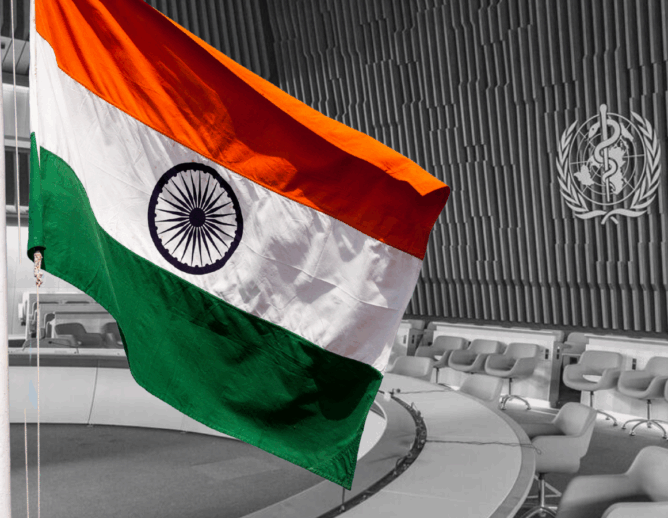This Expert Column is the second piece of a two-part series that examines how abortion is regulated compared to other health services in the United States and globally. The first piece examined the most recent wave of abortion exceptionalism in the United States. It analyzes how legislatures, regulatory bodies, and courts have subjected abortion to uniquely burdensome and medically unnecessary rules, hindering abortion access and negatively affecting health, well-being, and human rights.
By characterizing abortion as health care, international organizations have pushed back against the rise in abortion exceptionalism. The World Health Organization (WHO) recognizes that “[a]bortion is a simple health care intervention.” Human rights bodies similarly stress that realizing the right to health requires treating abortion like other essential reproductive health services. Abortion care should meet the four essential elements of the right to health’s “AAAQ framework” — namely, it should be available, accessible, acceptable, and of quality.
While various jurisdictions (including some states in the United States) continue to criminalize and heavily restrict access to abortion, numerous countries have adopted laws and policies that align with WHO recommendations and human rights frameworks. In the process, they have taken incremental steps towards embracing abortion as health care across areas, including facilities and providers, medication, patient decision-making, financing, and destigmatization.
Abortion Facilities and Providers
Abortion as health care is not possible without adequate abortion facilities and providers. WHO emphasizes that abortion must be “centered within primary care, fully integrated within the health system” as part of universal health coverage (UHC). In Ireland, abortion in early pregnancy only became legal in 2018. The Irish “Model of Care” allows general practitioners to provide medication abortions locally through nine weeks of pregnancy, ensuring that patients can receive abortion within community-based care.
The Committee on Economic, Social and Cultural Rights’ (ESCR Committee) AAAQ framework requires States to ensure an adequate supply of trained providers and facilities capable of providing comprehensive reproductive health care. The WHO has found that task-sharing — which enables abortion care to be shared between physicians and mid-level health workers (e.g., nurses, nurse practitioners, midwives, physician assistants) — improves geographic access to abortion and reduces system-wide barriers to such care. In South Africa, the 2021 guidelines on the Choice on the Termination of Pregnancy Act (1996) allow trained nurses and midwives to perform abortions for up to 13 weeks of gestation in most primary health facilities.
Abortion Medications
The WHO regards abortion medication as a safe and effective method for terminating early pregnancies and has endorsed self-managed abortion in appropriate settings. Since 2005, the WHO has included them in its Model List of Essential Medicines and, since 2019, in its core list. Globally, nearly 100 countries have approved mifepristone. In 2022, Bolivia’s Ministry of Health added mifepristone to its National Essential Medicines List, ensuring public-sector procurement and distribution.
Additionally, the WHO encourages eliminating medically unnecessary place-based restrictions on medication abortion and supporting telemedicine abortion to increase equitable access. Countries like Colombia and France have adopted measures to ease restrictions on medication abortion and pave the way for alternatives to in-person care. Colombia’s 2023 Resolution 051 explicitly regulates telemedicine abortions, requiring insurers to make remote abortion services available and enabling medication delivery via national courier. In 2024, France eliminated in-person visitation requirements for medication abortions and allowed pharmacists to dispense abortion pills prescribed via telemedicine.
Abortion Decision-Making
Even where abortion is legal, some jurisdictions’ laws allow or even require interference (e.g., by a provider, parent, or judge) with a patient’s abortion decision-making. The WHO and the ESCR Committee both stress that abortion counseling should be non-directive, voluntary, and evidence-based, and that laws avoid biased information, mandatory waiting periods, or third-party authorization. The Inter-American Commission on Human Rights further recognizes that misinformation or coercive counseling infringes on women’s access to health and information.
Various countries have taken measures to protect abortion patients’ decision-making. Mexico’s 2022 Technical Guidelines for Safe Abortion Care require counseling to include objective, clear, accurate, and evidence-based information. Meanwhile, Norway’s 2025 Abortion Act guarantees independent decision-making “without being subjected to pressure.” New Zealand’s 2020 Abortion Act allows — but does not require — providers to offer pre- or post-abortion counseling, ensuring voluntary participation.
Abortion Financing
The WHO recommends that abortion services be free or affordable, integrated into national UHC schemes, and publicly financed to avoid financial hardship. The ESCR Committee characterizes affordability as part of the “accessibility” element under the AAAQ framework and calls for both public and private providers to make sexual and reproductive health services affordable for all.
Approximately 45% of countries with national health benefits packages include abortion care in those packages. Canada, Norway, and Spain fully fund abortion care through their public health systems, eliminating patient charges for procedures, medication, and counseling. Meanwhile, Nepal’s 2018 Safe Motherhood and Reproductive Health Rights Act mandates that local governments allocate funding to ensure free reproductive health services, including abortion, for low-income individuals.
Destigmatization of Abortion
Cultural norms, as well as restrictive laws and policies, can perpetuate stigma around abortion. The Human Rights Committee and ESCR Committee have urged States to prevent and eliminate stigmatization and negative stereotyping that obstruct access to sexual and reproductive health care. Similarly, the WHO identifies stigma as a major barrier to abortion care and calls for legal protections for patients and providers against harassment and discrimination.
Law and policy approaches to addressing abortion stigma can vary by country — many of which also strengthen enabling environments for abortion care. Some Canadian provinces (e.g., British Columbia, Ontario) have enacted safe access zone laws, creating protest-free “bubble zones” around abortion facilities and providers’ homes to protect their safety and privacy. Spain’s Organic Law 1/2023 grants paid medical leave for abortion-related care, treating abortion as standard health care.
Takeaways
On the global level, countries around the world are increasingly adopting laws and policies that treat abortion as health care. Now is the moment for advocates and decision-makers in the United States to look to the experiences of their peer countries — for not only inspiration, but also affirmation that it is possible to combat abortion exceptionalism and protect abortion for all as an essential health service.
DISCLAIMER: The views and opinions expressed in this piece are those of the authors and do not reflect the views of the O’Neill Institute.



